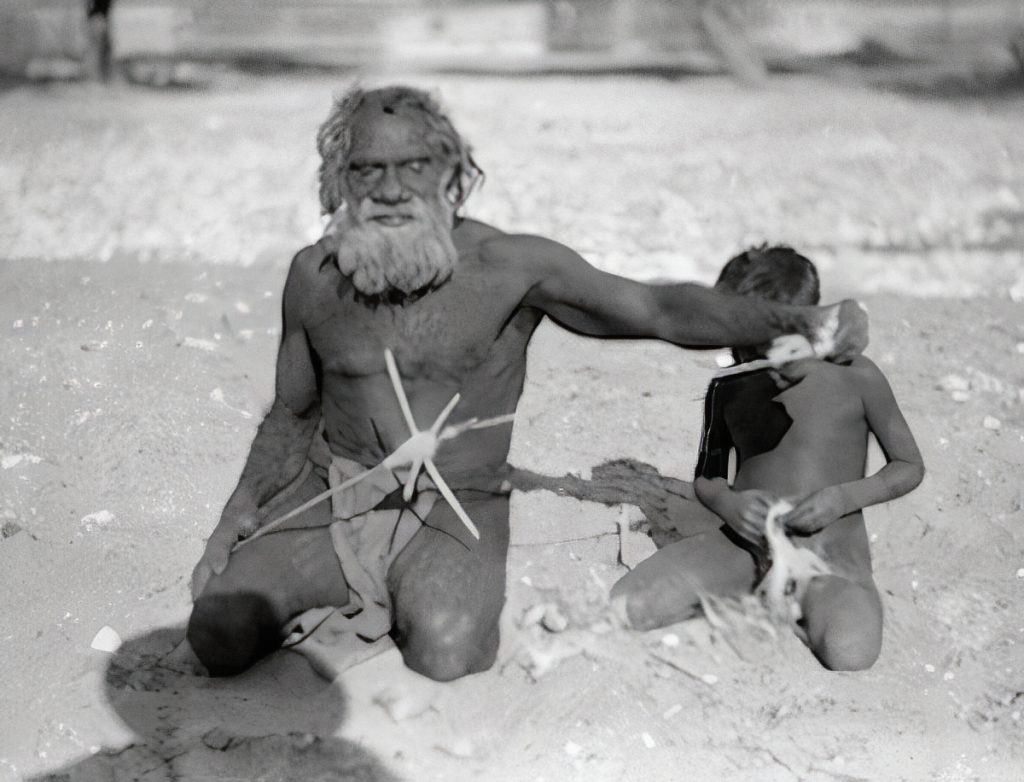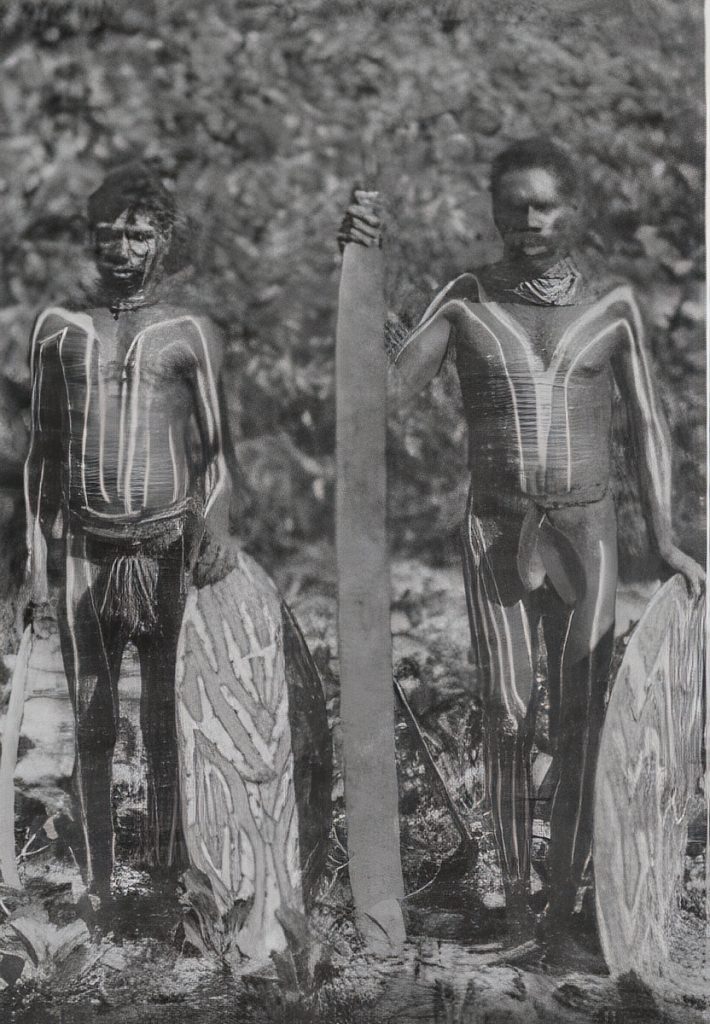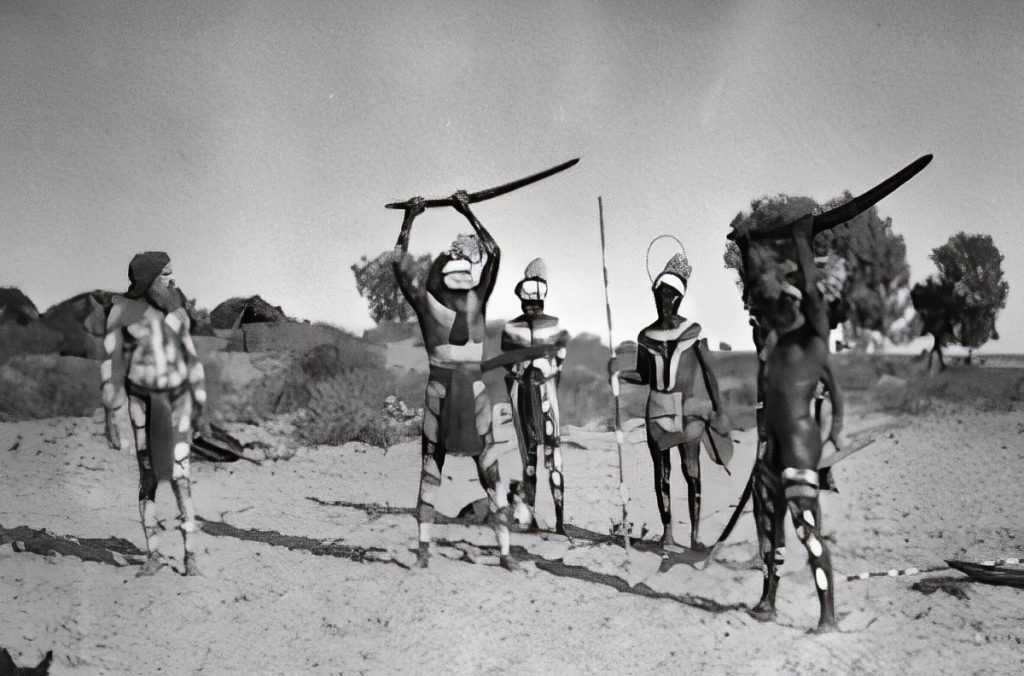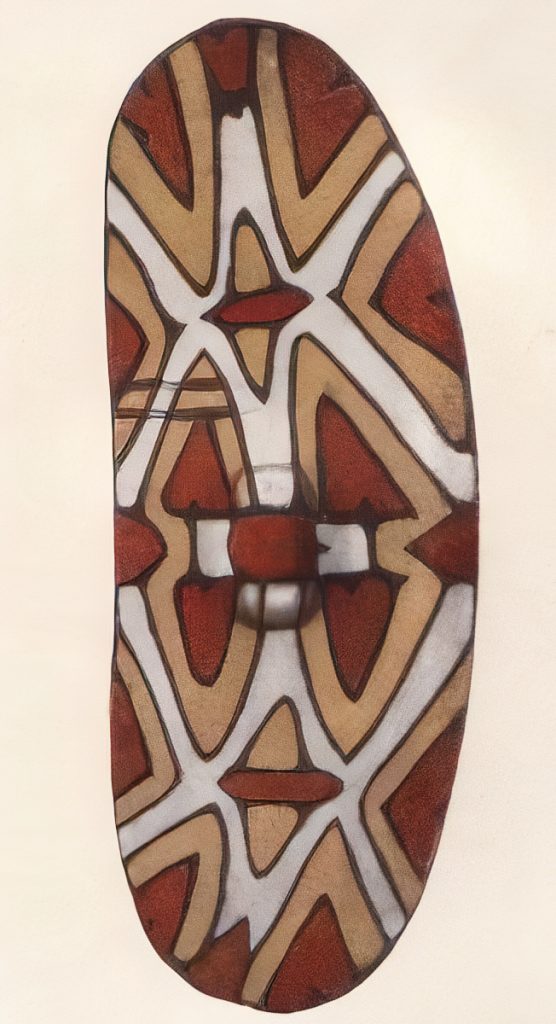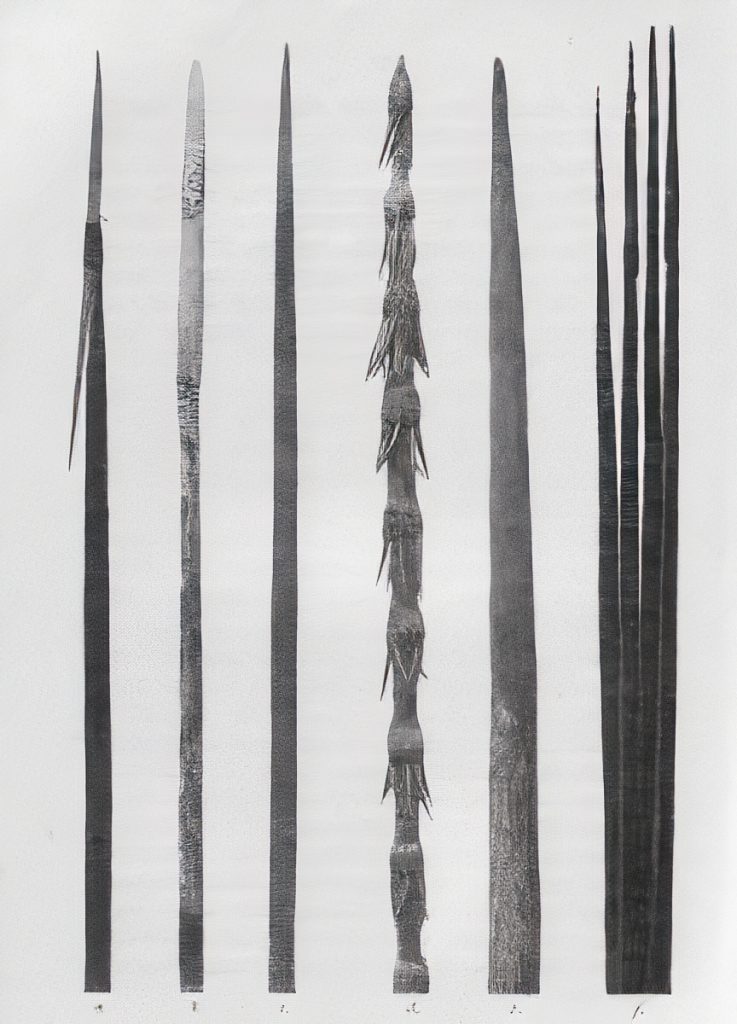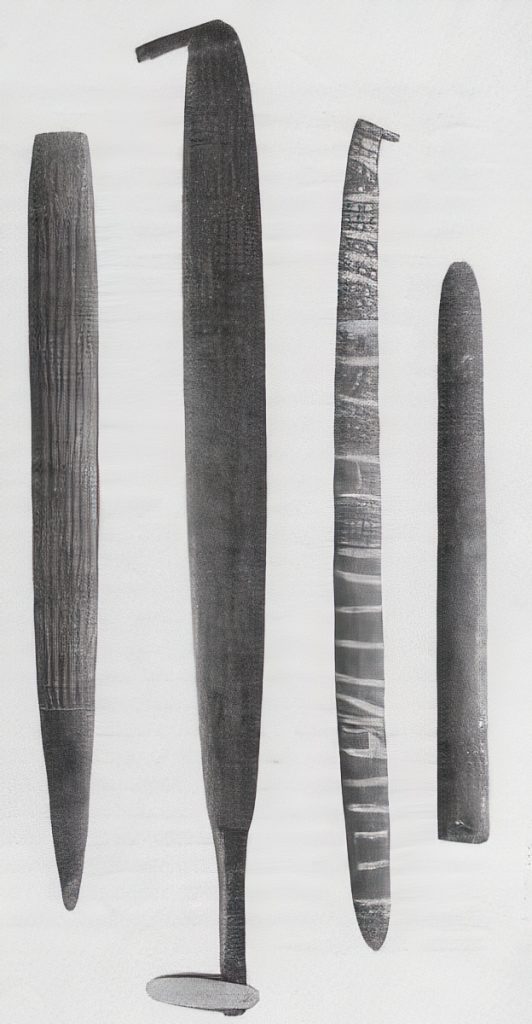TOOLS, UTENSILS, AND WEAPONS
Australian Aborigines manufactured a range of tools, utensils, fighting weapons, and hunting weapons made from the available resources of wood, bone and shell.
Wooden tools and utensils included:
- Chisels and scrapers (stone pieces) hafted to long wooden handles. (See the section on stone tools.)
- Women’s digging sticks made with a range of shapes and sizes.
- A woman’s spade-like implement was used in the south-east of the country.
- Wooden carriers. (See section on containers).
- Wooden spindles of crossed sticks were used to spin human and animal-fur string.
- Fire-making kits. These varied throughout the country. Often two sticks were rubbed together, or one was drilled into the other, to create hot embers. Sometimes a boomerang was rubbed across a softwood shield to make embers. (See Making Fire in the Australian Aboriginal Culture Series published by David M. Welch.)
- Bone tools include awls to pierce holes in soft objects to allow them to be sewn or attached with string. Kangaroo and possum jaws were used as engravers, and fibulae were used as pressure flaking tools to press on the edge of a stone blade and produce a sharp irregular edge. The scapulae (shoulder blades) of animals were sometimes used as scrapers.
- Shell tools and utensils. Small flat marine and freshwater shells were used as palettes for mixing ochre with water to make paints. Large marine shells were used as water carriers. In coastal areas, sea shells were often fashioned into knives and scrapers in place of stone tools.
Fighting weaponry used by Australian Aborigines included:
(a) Thrown objects:
- A range of fighting spears with stone spear tips, hardwood multi-barbed spear tips and spatulate spear points exist. Some spears were held and thrust at the enemy, some were hand-thrown, but most were thrown with the aid of a spearthrower.
- Clubs were sometimes thrown at the enemy, used like a throwing stick. (Today, wooden clubs are replaced by any available piece of metal, such as tyre levers, star pickets, scrap pieces etc.)
- Boomerangs and throwing sticks. Non-returning boomerangs were designed to throw in one direction at an enemy or prey.
(b) Parrying objects:
- Small wooden clubs, able to be held in one hand, were used throughout the country. Specific shapes occur in different regions, and include a pineapple club in Queensland, the leangle of Victoria, the lilil of New South Wales, and a beaked club on the Tiwi Islands north of Darwin.
- Large wooden clubs, requiring the use of two hands and used like battle axes, were used in northern Queensland, across Arnhem Land in the Northern Territory, and around the Lake Eyre basin in northern South Australia.
Two men with their weapons, a large battle axe, two painted shields, and a boomerang. They wear painted body decoration, necklaces, and waist bands. The man on the right wears a European leather belt (replacing the traditional waist band) and pubic decoration.
Cardwell, north Queensland.
From 17 Years Wandering Among the Aboriginals.
(c) Defensive objects
- Shields. These fall broadly into two groups. Firstly, narrow hardwood shields used to ward off blows from a club when used in close conflicts. Secondly, wider shields used to defend oneself from spears thrown by the enemy.
- Instead of using a shield, the spearthrower was used as a stick to deflect spears in parts of northern Australia.
Hunting weapons and devices
- Spears. Fighting spears were used to hunt large animals. In northern Australia, smaller light-weight spears, made from bamboo grass and other light materials, were thrown with a light-weight spearthrower and used to spear birds in flight, and small animals. Multi-pronged spears were used to catch fish and eels.
Six spears from north Queensland, circa 1912.
From left to right:
- Erik Mjoberg was told this barb was made from a human shin bone, and it appears similar to those made from stingray barbs.
- A spear with its tip made from part of a fish or silurid.
- An Acacia wood spear.
- A spear with barbs made from echidna quills.
- A black palm spear.
- A four-pronged fishing spear.
- Clubs, boomerangs and throwing sticks were used to hunt animals. The returning boomerang was thrown into a flock of birds and increased the chance of success because of its returning nature.
- Sticks and stones from the ground. If an animal was seen and no club or boomerang was close at hand, a person grabbed the nearest stick or stone from the ground and threw this at their quarry.
- Nets. Kangaroos, wallabies and other animals were chased and caught in long nets which had been woven and strung across their usual pathways. Long nets were also used in some coastal areas as fish traps. Small scoop nets were used to catch small fish. High nets were strung between trees to catch birds.
- Traps. A range of fish traps and eel traps were used.

